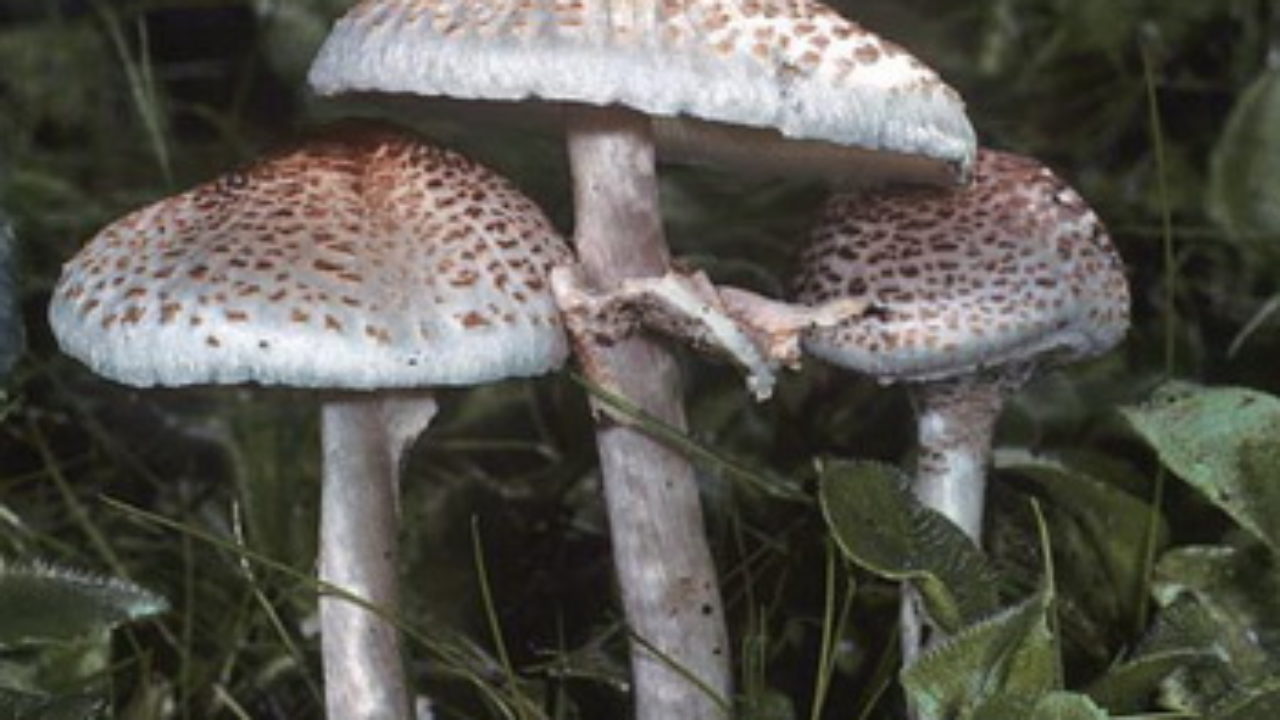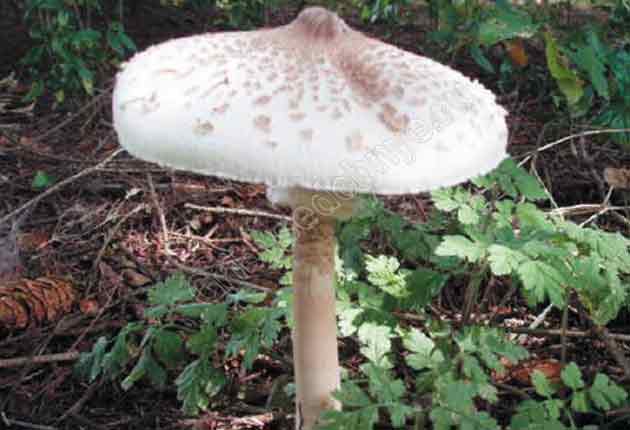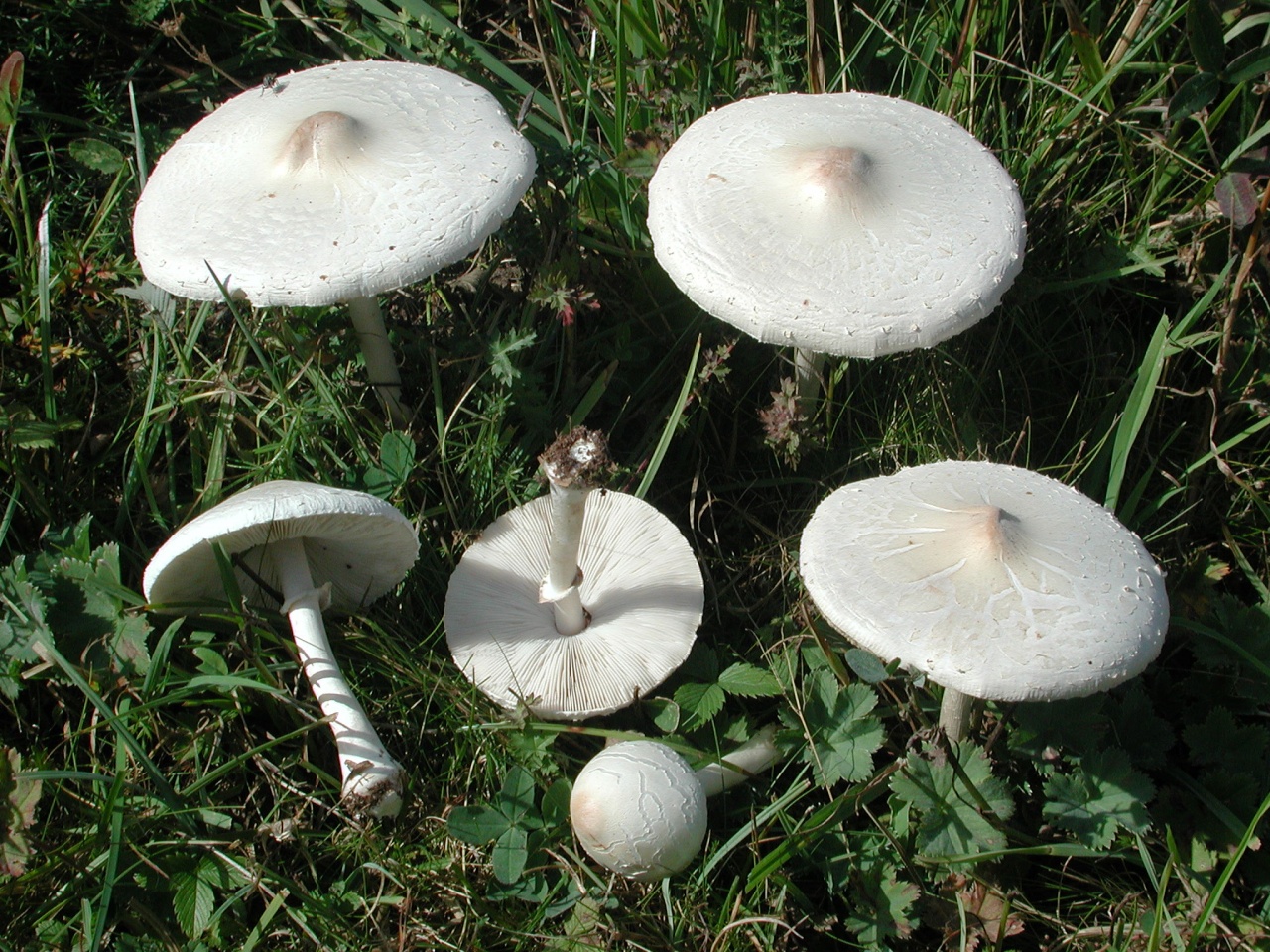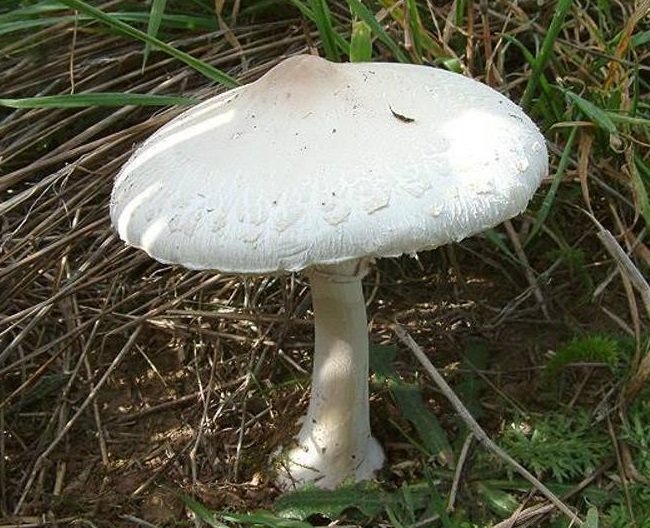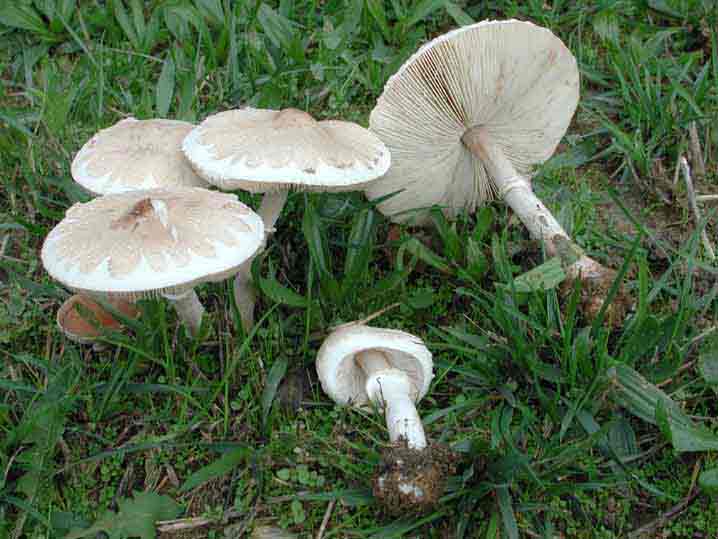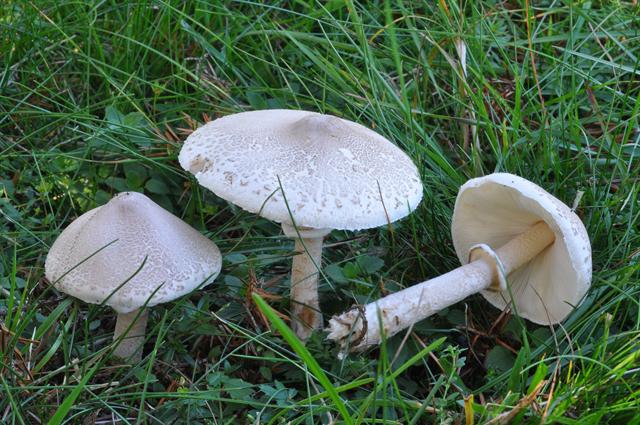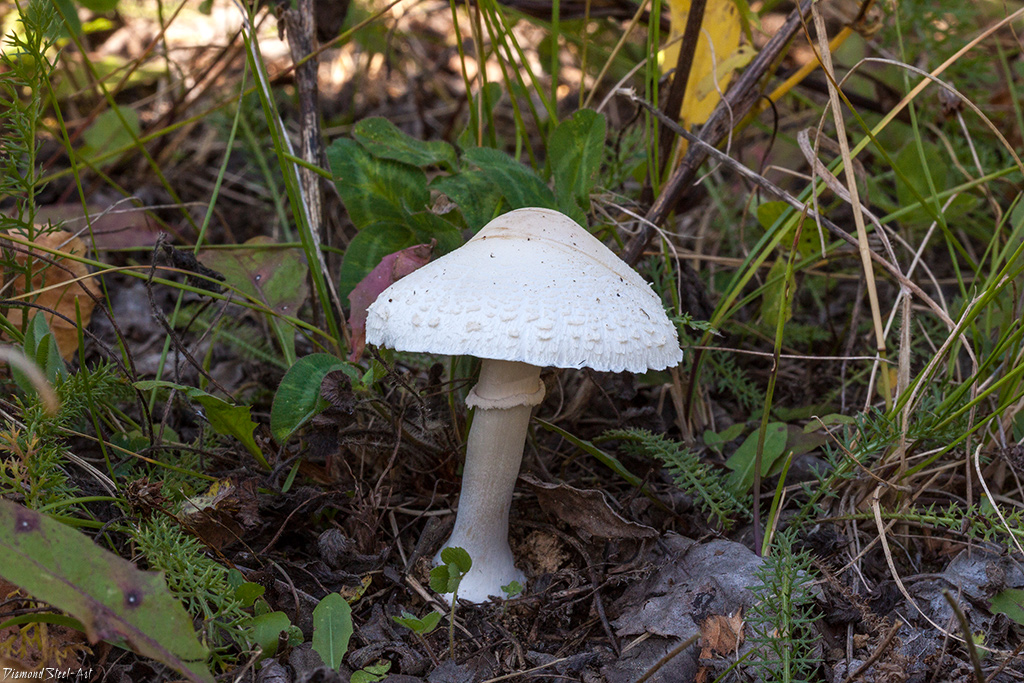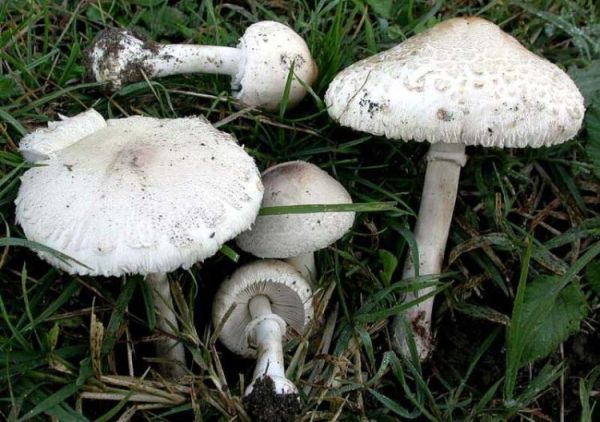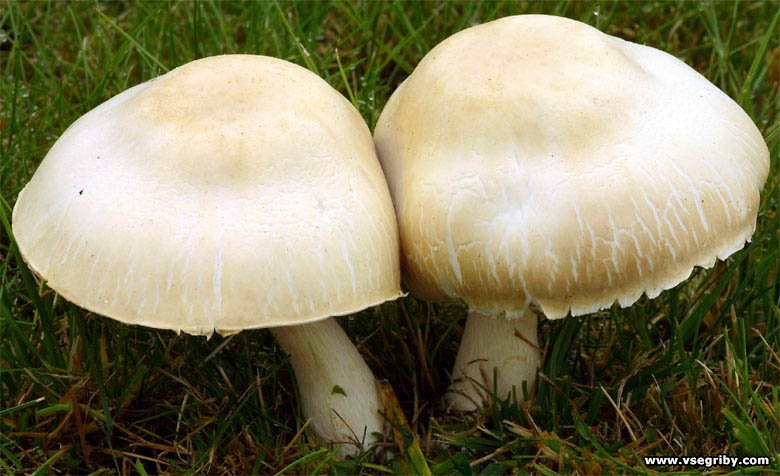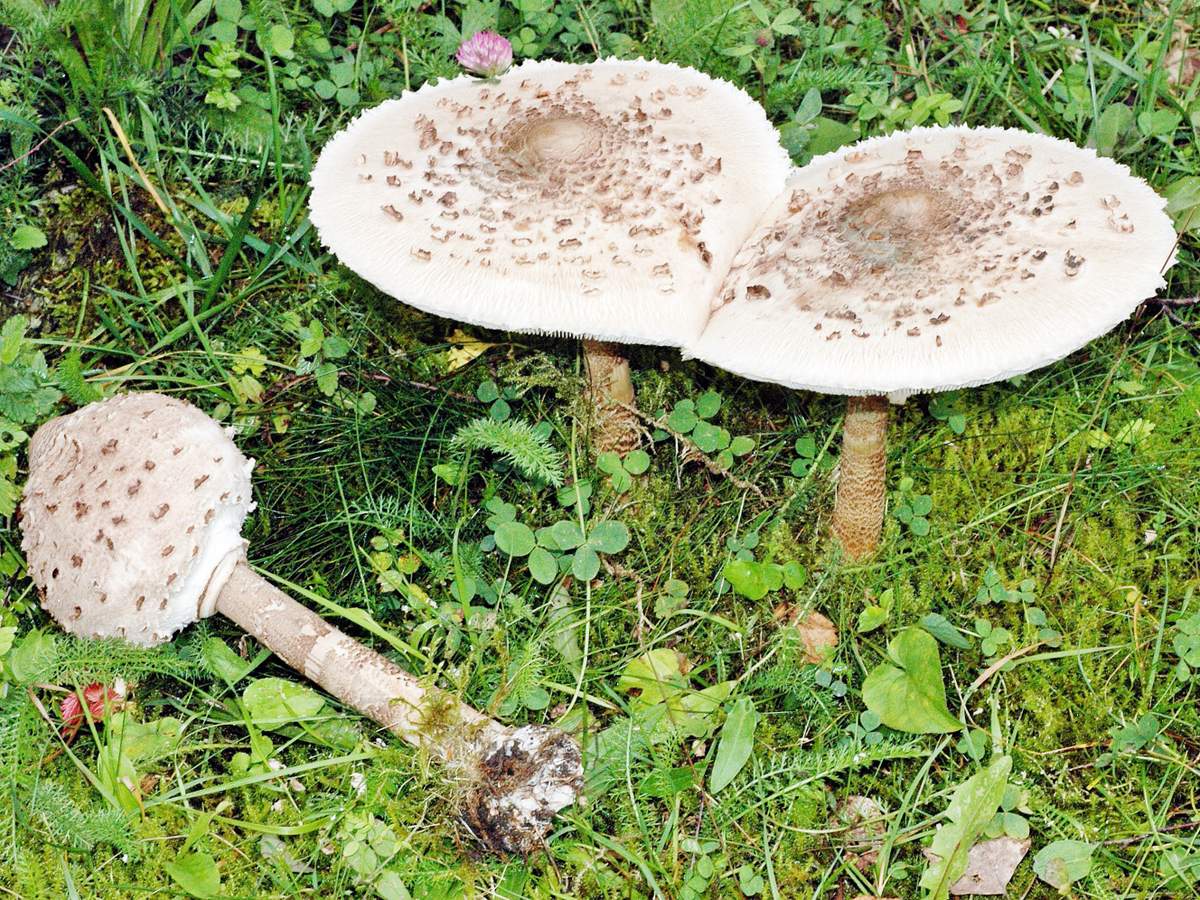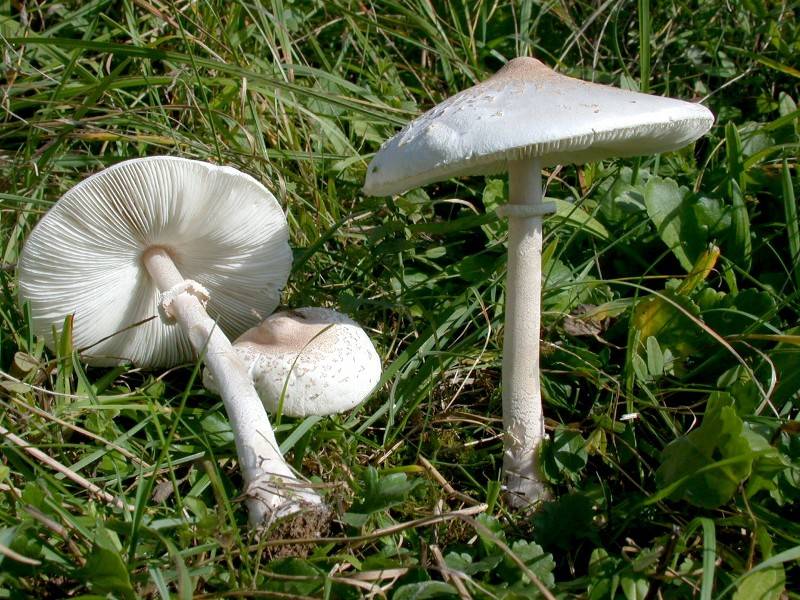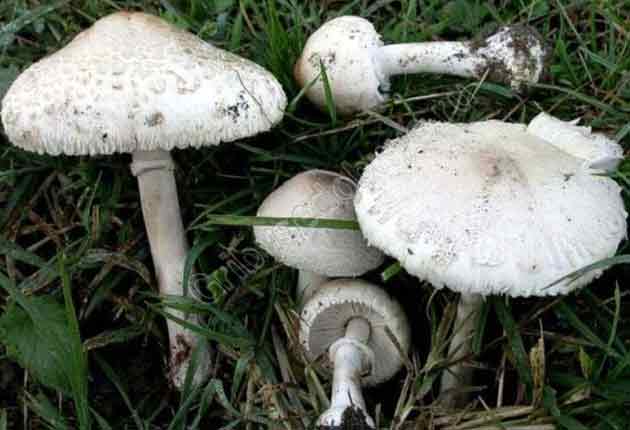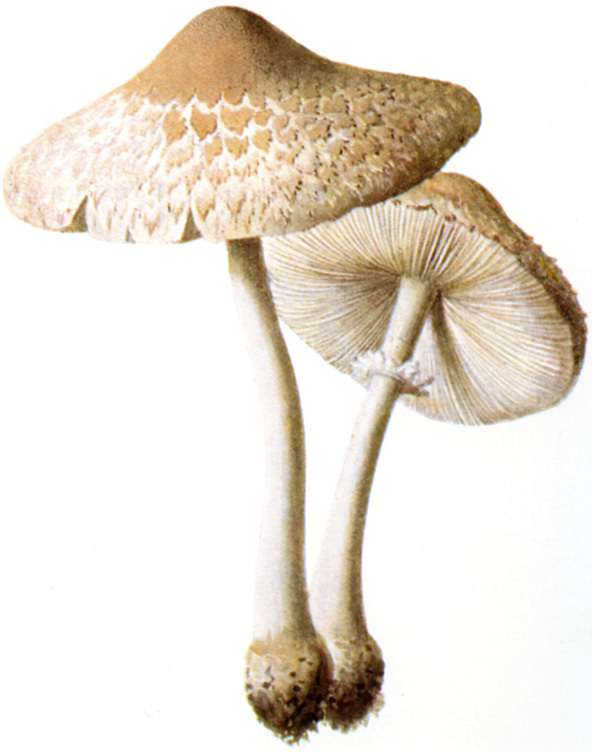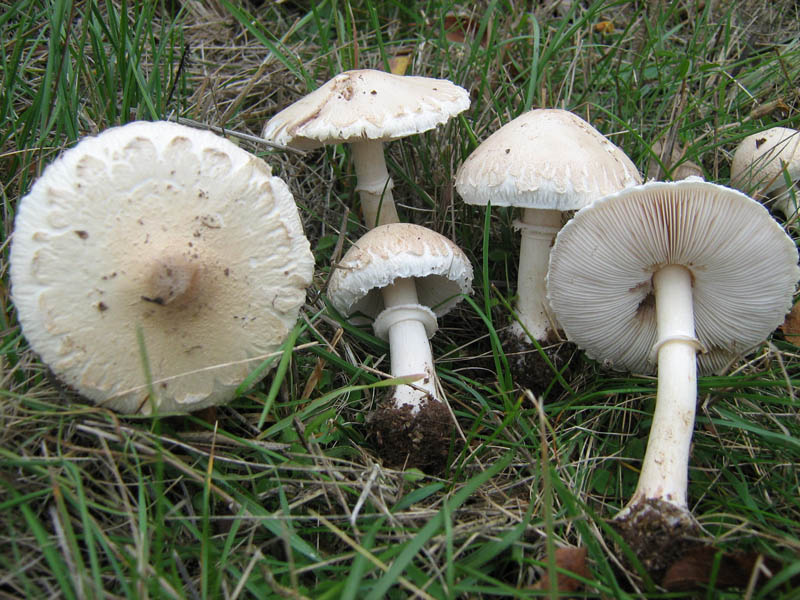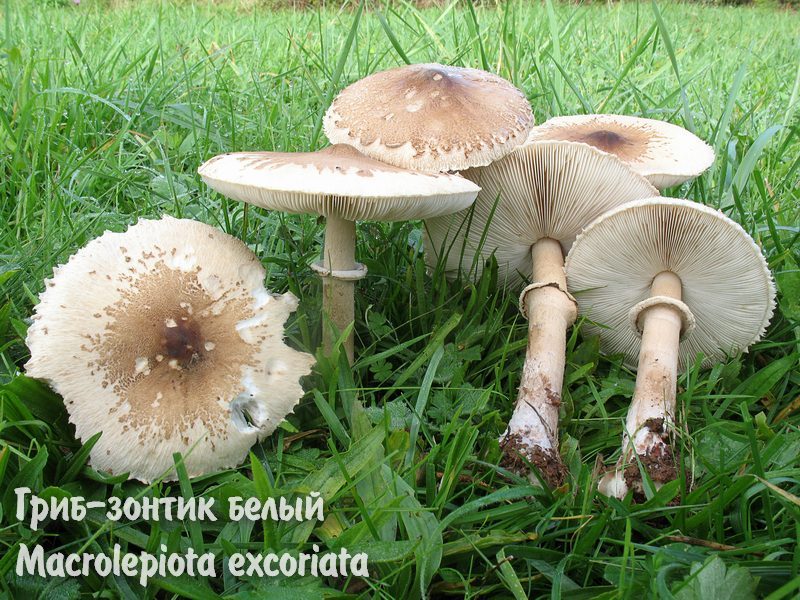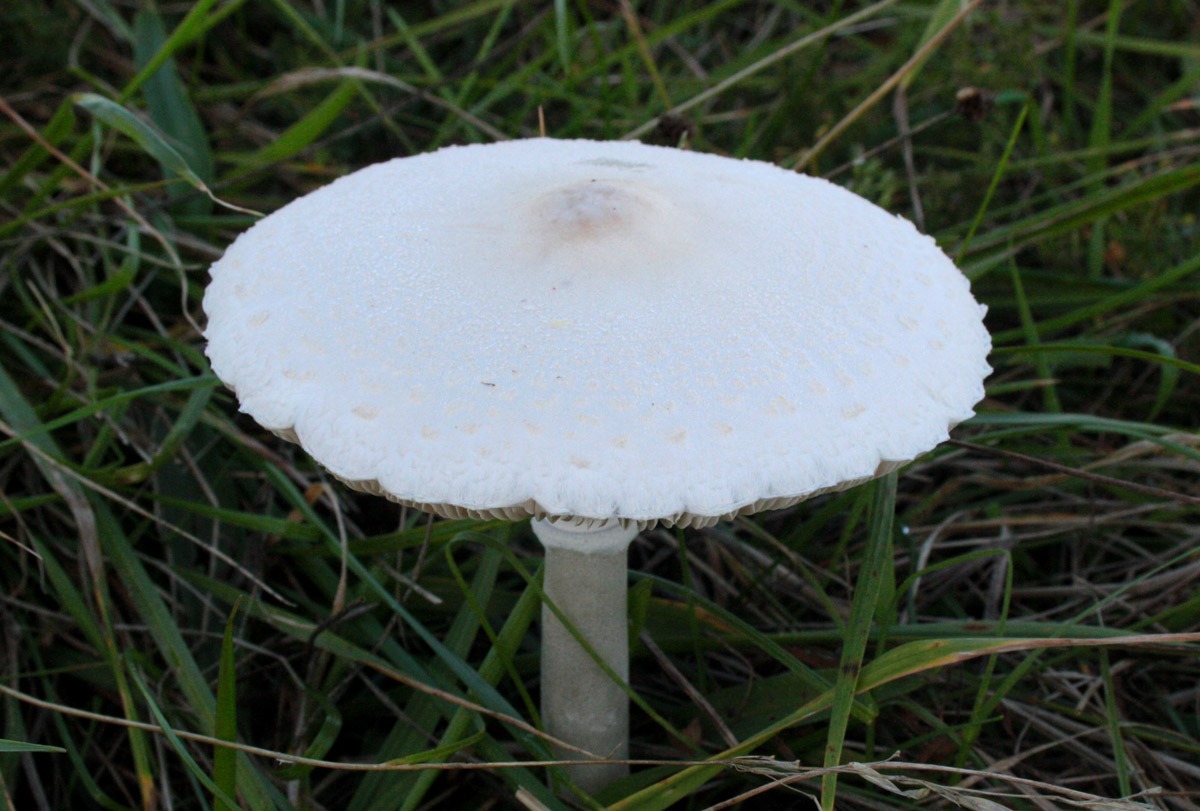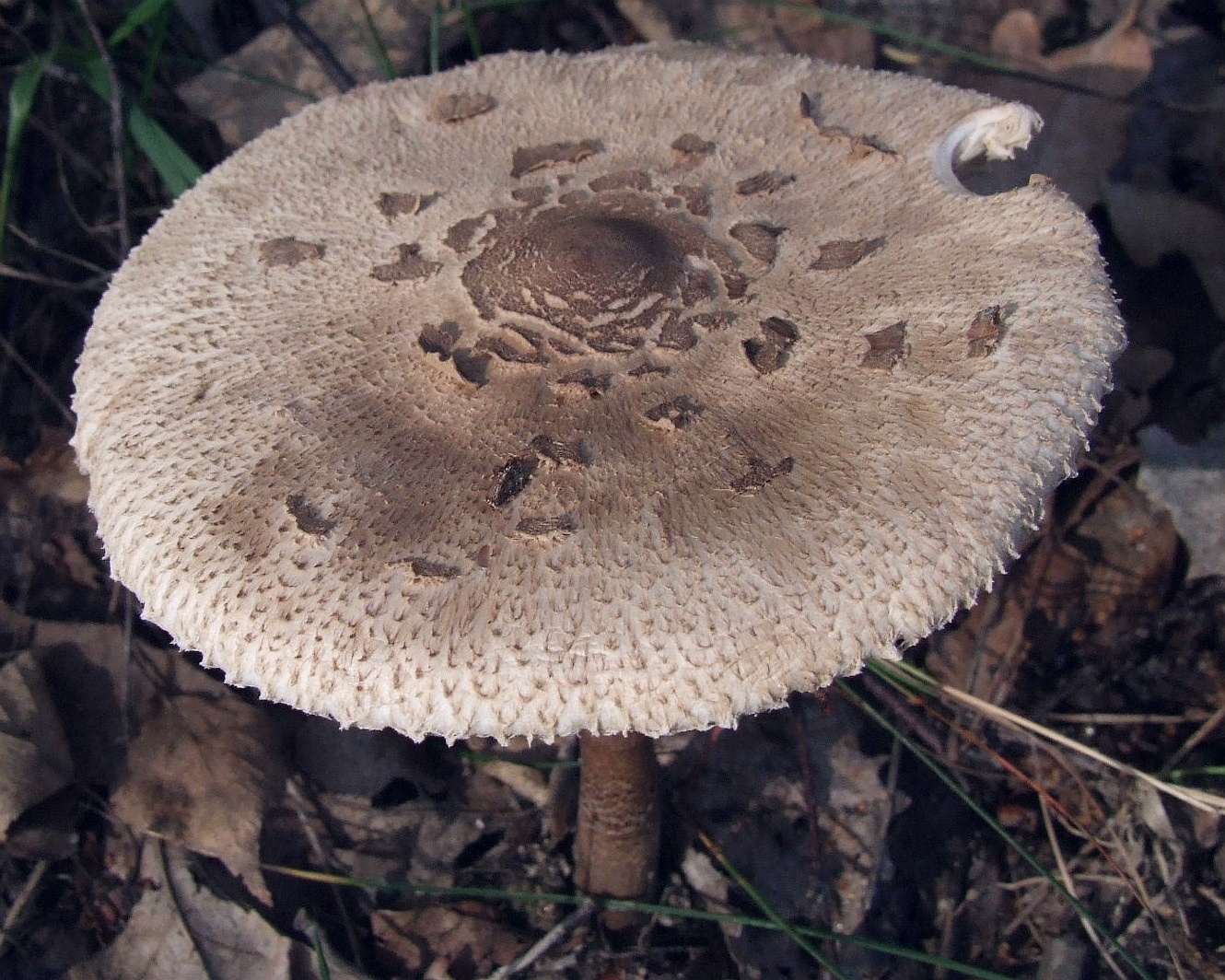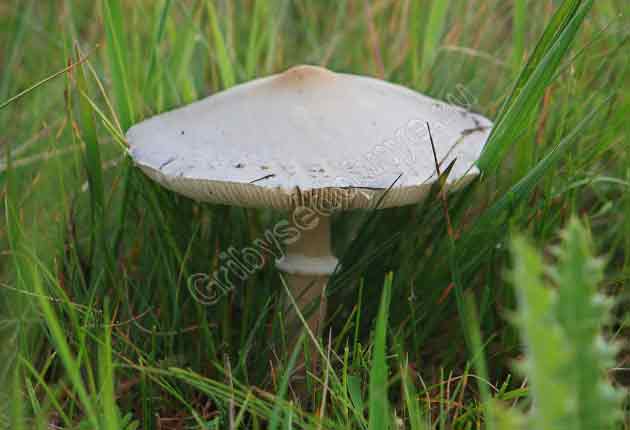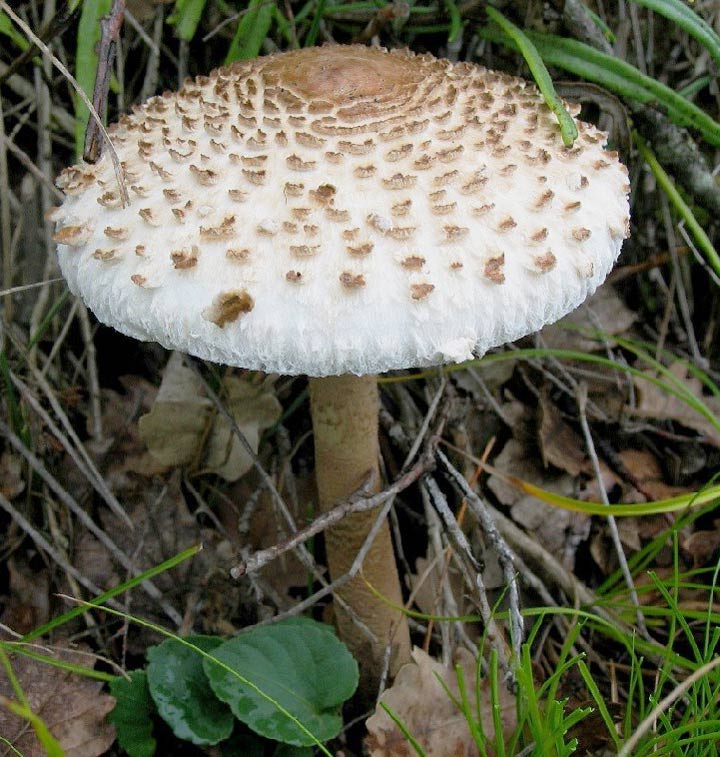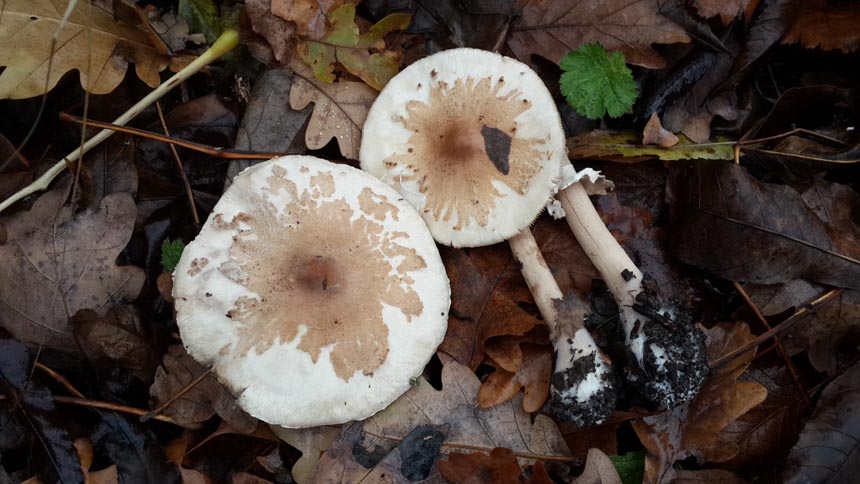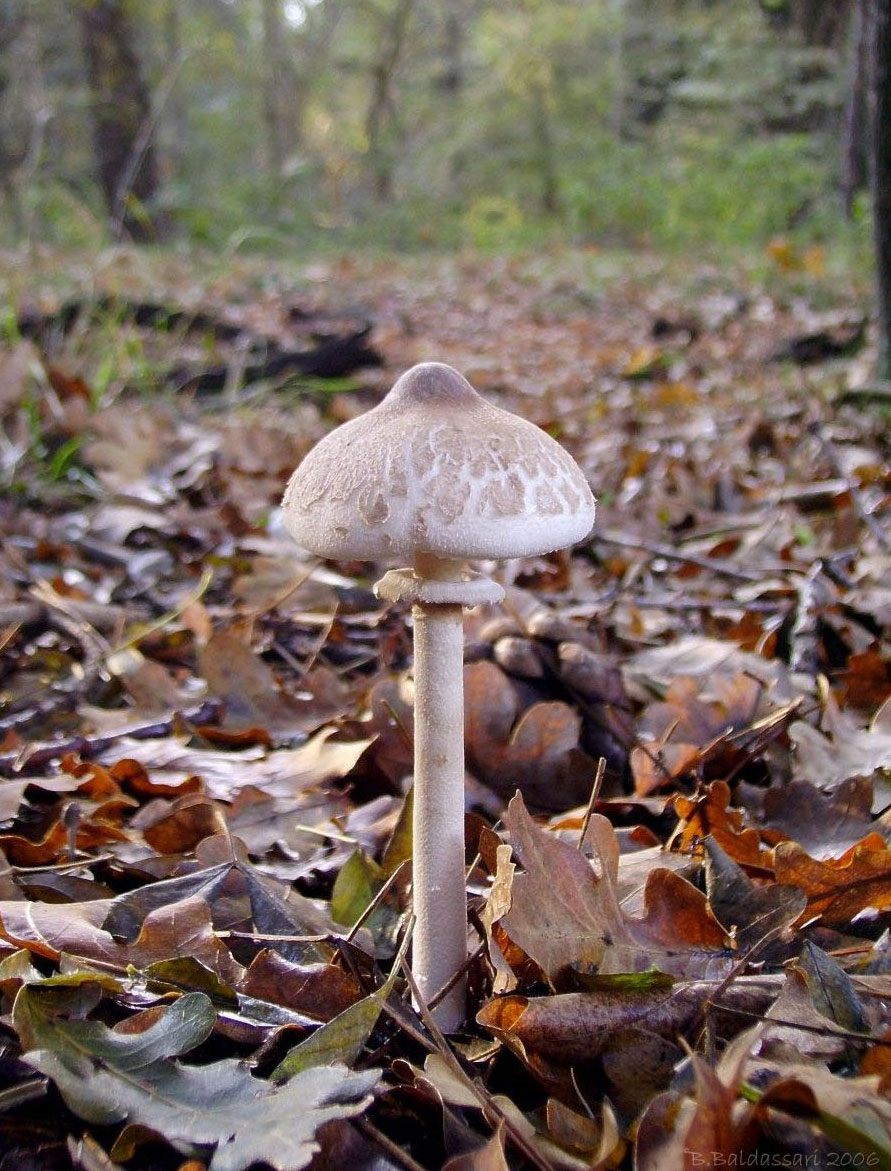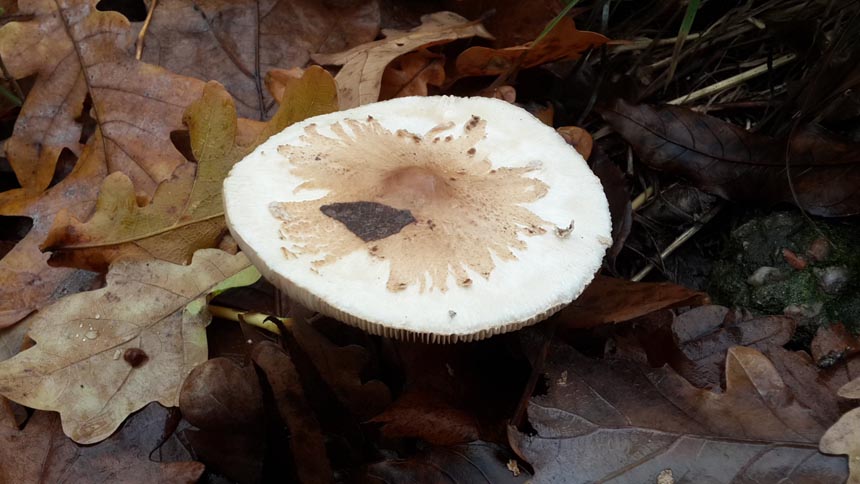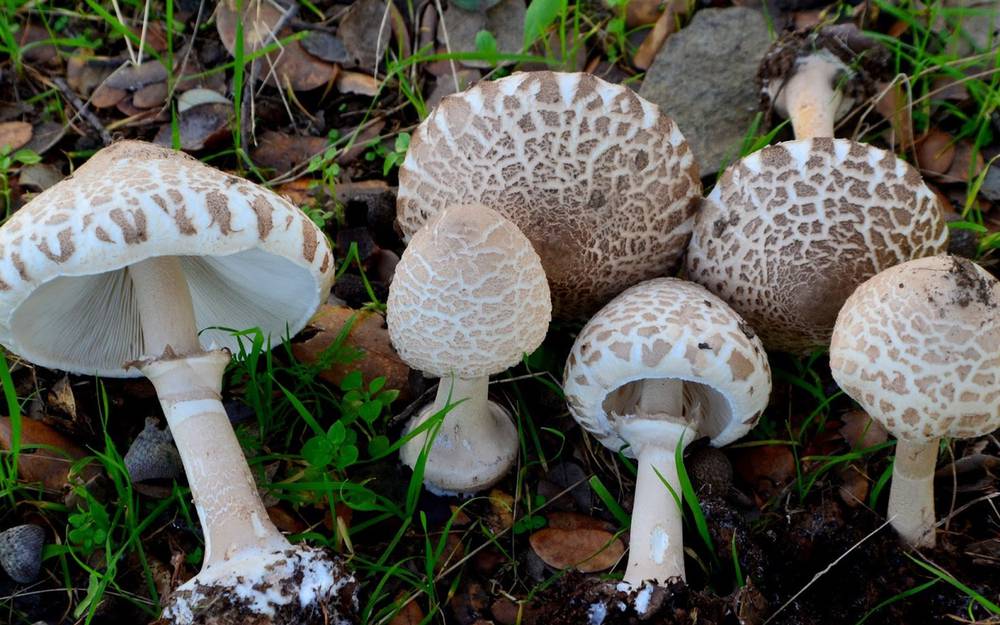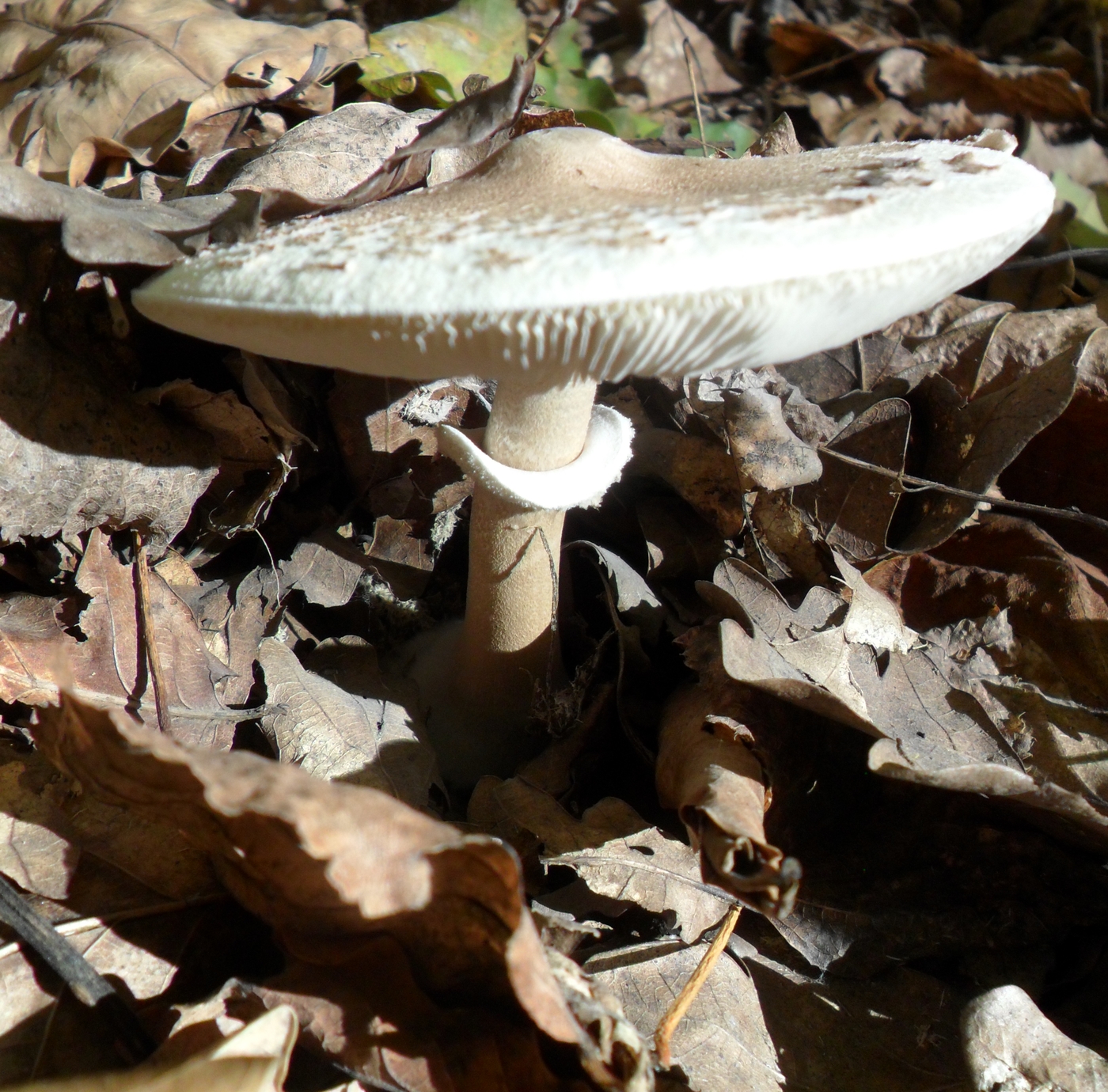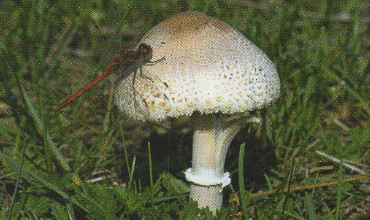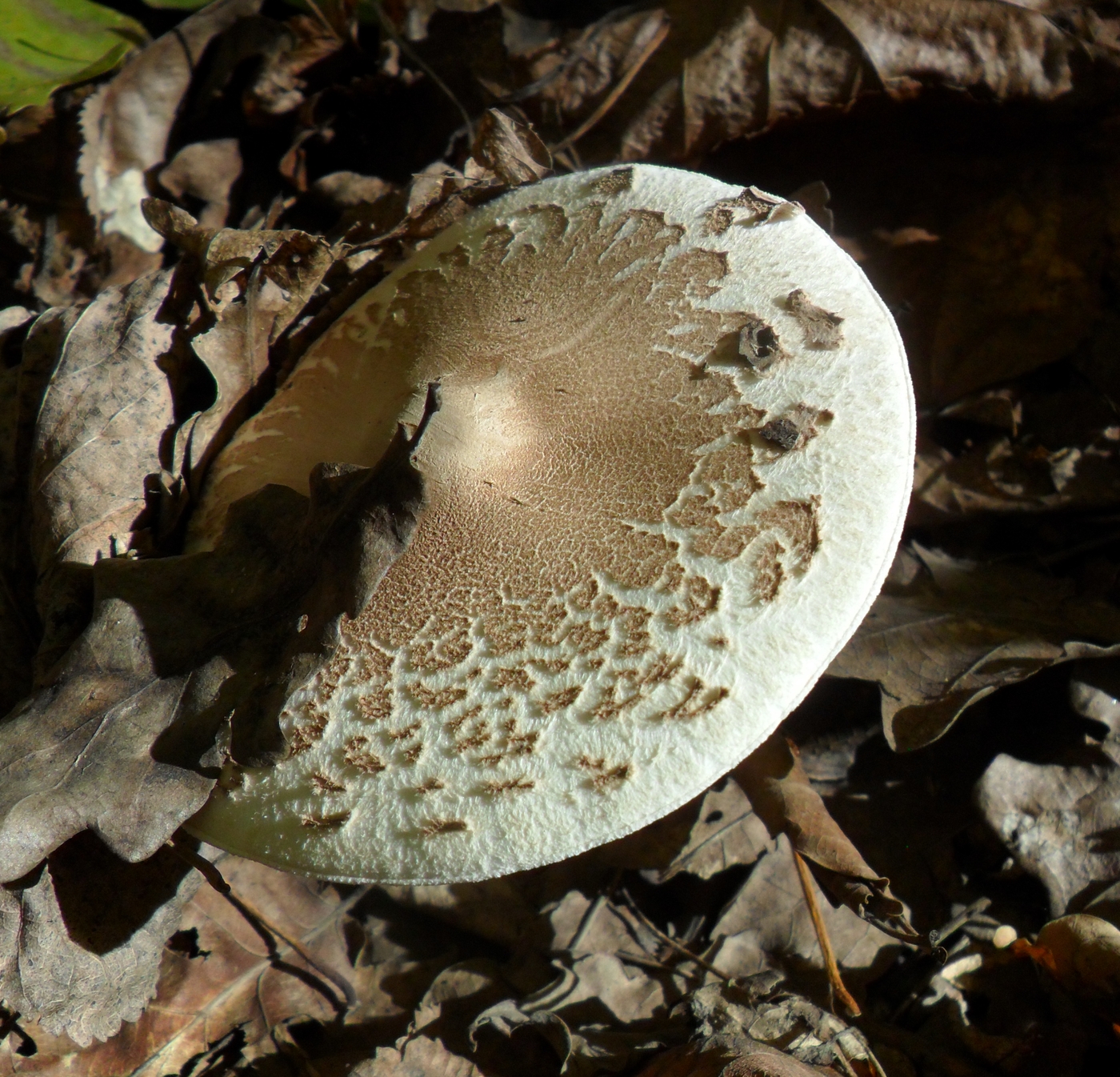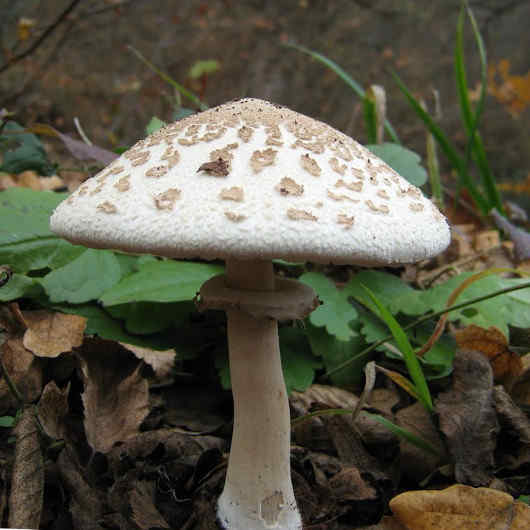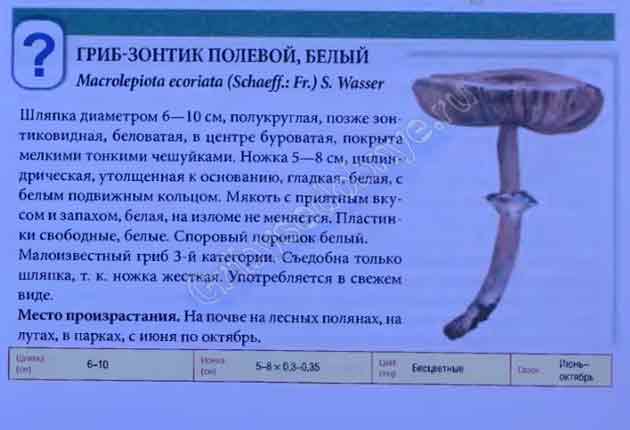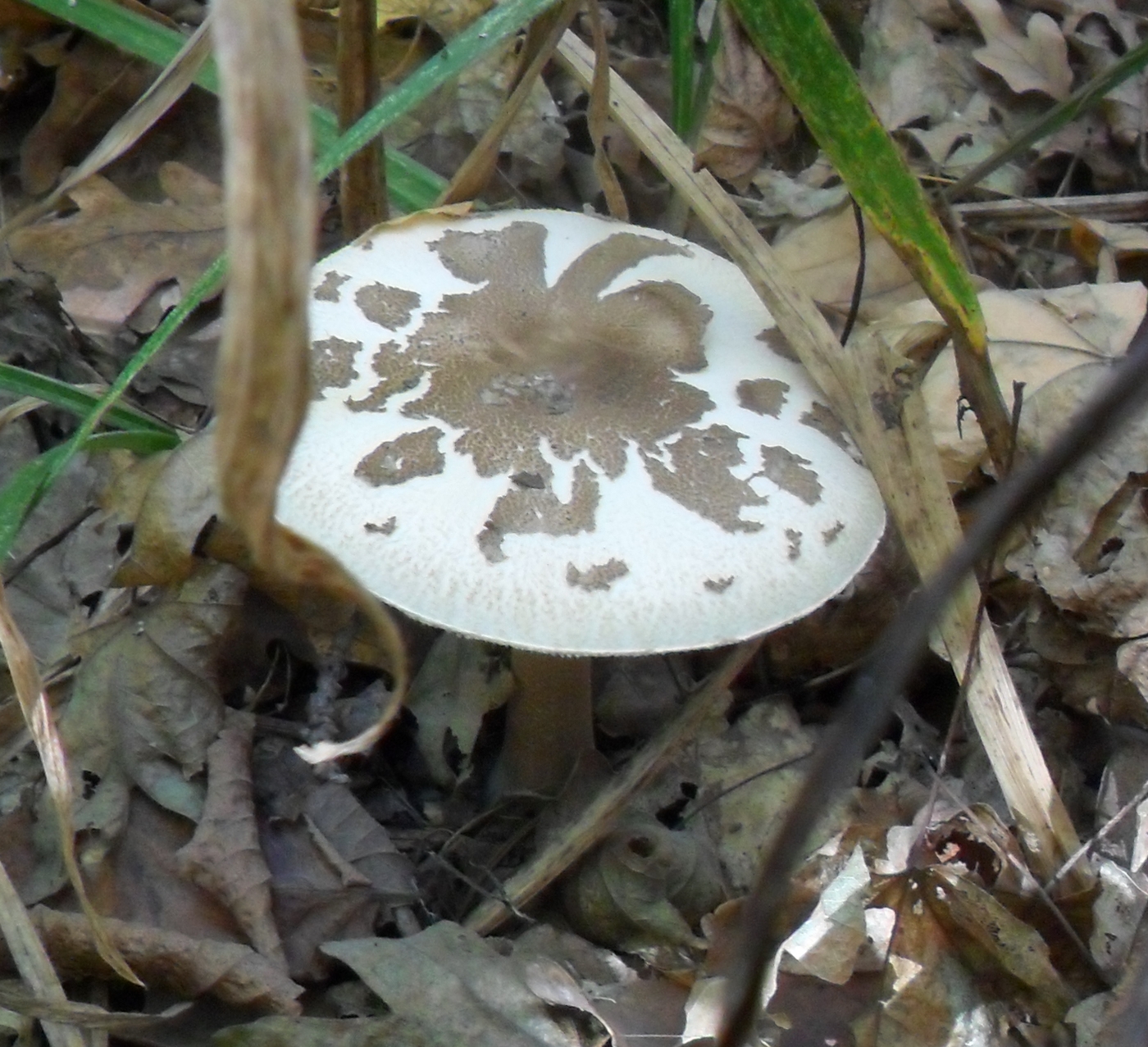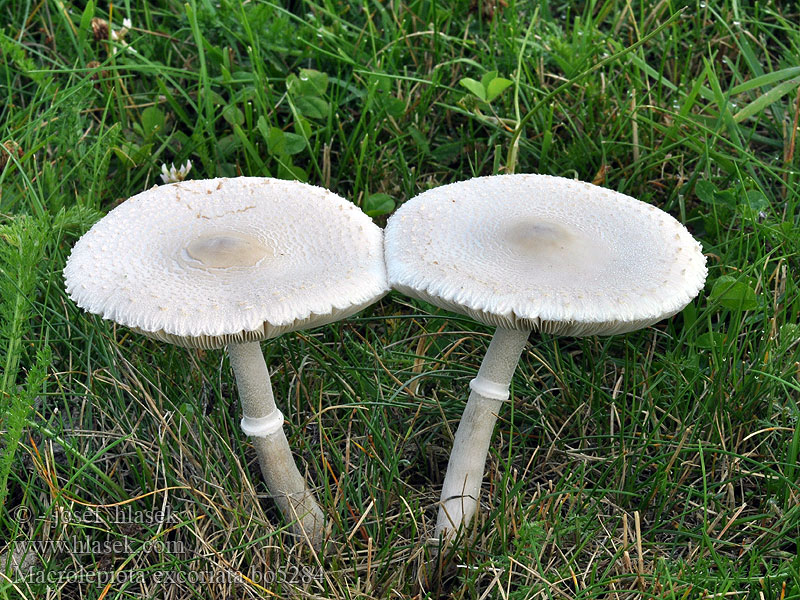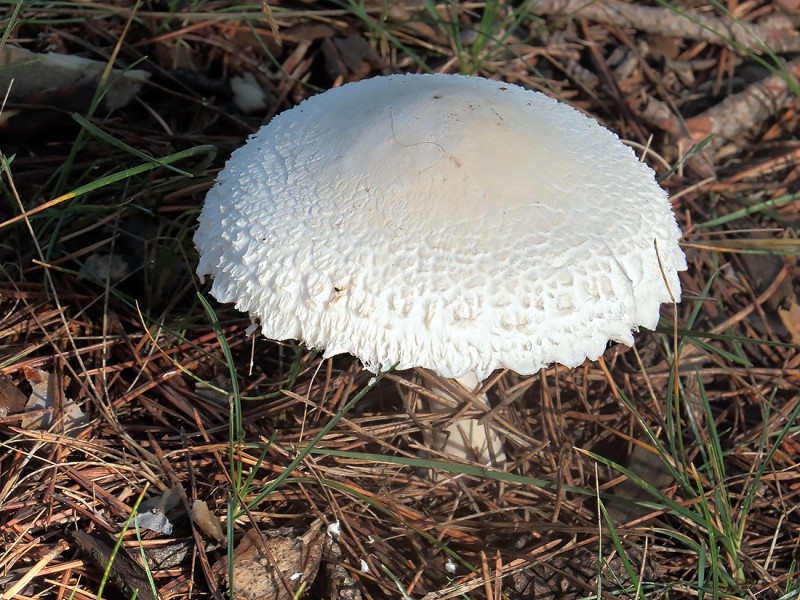photo, description of what mushrooms umbrellas look like and when to collect them
The white umbrella mushroom from the Champignon family is widespread - it grows both in forest thickets and in meadows, in groups or in splendid isolation. Among these gifts of the forest, there are both edible and poisonous varieties. Therefore, when going on a "mushroom hunt", read the photos and descriptions of umbrella mushrooms in order to collect only those species that are not dangerous to eat.
Mushroom umbrella white with photo and description
The lamellar, or umbellate (umbrella mushroom white) is called an edible poplaushka, and, according to all descriptions of it, there is the same one that is called in the Tambov and Oryol provinces a white fly agaric. In many scholarly editions, it is called (it seems, however, not quite correctly) a back and a violin.
The deposit of this fungus is sometimes in conifers, but more in aspen places and walnut groves, although it loves mainly sandy soil. This mushroom is the largest of all mushrooms known in central Russia. The name of the white fly agaric, assigned to him by the common people, should not frighten those who know him very little, for it came solely from the brown scales that cover the cap of the umbrella plate. For the same reason, it is often called a turkey, finding a resemblance in its scales sticking out along the edges of the cap with the goiter of an Indian rooster. The residence time of this mushroom is all summer and the beginning of autumn, but it always grows alone, and in its size it immediately catches the eye. The best time to collect umbrellas is mid-September, when his hat opens.
See what the umbrella mushrooms look like: the distinctive features of this type of plate are in the cap, which forms a short, smooth tube at the point of attachment to the stem. The shape of the cap in youth is ovoid, pale brownish in color, and sometimes even completely white, with its edges close, but loosely adjacent to the leg. Subsequently, it separates more and more noticeably from it and, forming for some time the form of a bell, by old age becomes completely flat, dish-like, with a width in diameter of 12 cm, even up to 25 cm, and, however, invariably retains an umbilical bulge in the middle of its surface , sometimes even somewhat pointed.
As you can see in the photo, the white umbrella mushroom has a light color only in youth, the color of the upper skin of the cap gradually, with the development of the fungus, becomes more and more dark brownish, but this actually happens from the fact that the skin, cracking, forms on the surface the fungus has dark scales that stand out sharply against a light gray-ash background. The same leathery scales are also formed on the edges of the cap, and hang around them in more or less regular scraps, which in particular gives the umbrella plate the appearance of an umbrella decorated with a fringe.
Pay attention to the photo, what the pulp of the umbrella mushrooms looks like: it is light, rather tender, but not greasy. The pulp has a rather noticeable nutty odor (which is probably why some call it a leaflet)
Its thickness reaches 1.5 cm.The plates under the cap are wide, in youth they are white, and then yellowish and even brownish, somewhat matching the color of the champignon plates in old mushrooms, they are not the same in length, but do not reach the stem at all, ending in the aforementioned cap tube.
The leg is cylindrical, sometimes hollow, from 15 to 25 cm in height, but from top to bottom it thickens with a tuber, the more noticeable that under the cap the leg becomes noticeably thinner. In general, the average thickness of the leg is up to 2 cm. The color of the leg is the same as the cap, whitish, and also crossed by small narrow cracks covering the leg quite densely, sometimes in the form of scales, and sometimes in the form of lines. However, sometimes, especially in young mushrooms, the stem is completely white.The flesh of the leg is extremely viscous and therefore completely unsuitable for eating. The ring, almost always located on the leg, is usually 2 or even 8 cm apart from the cap, always leathery and conveniently mobile, but in color it is mostly white, and sometimes brownish.
The round or umbellate lamellar, called the edible poplushka, probably to distinguish it from other modifications of this mushroom, more or less poisonous, has a somewhat viscous meat in general, and therefore cannot in any way be attributed to the number of tasty edible mushrooms, nevertheless, it can be , harmlessly consumed in food. In Germany, France and Italy, this mushroom is eaten everywhere, but here in Russia it is often neglected, it seems, however, only out of ignorance of its harmlessness, and even more likely, due to the abundance of other, more delicious mushrooms. However, many commoners, especially foresters, often crumble it into their food.
After reviewing the photo and description of umbrella mushrooms, you can safely go on a "mushroom hunt":
Umbrellas white and amiant
These mushrooms grow mainly in the field, along roads, in meadows and pastures. You can find them on lawns in parks and in vegetable gardens, as they prefer places well lit by the sun. They are less common than variegated varieties, but they are also edible and tasty. The white umbrella mushroom is rather small.
The hat only grows up to 10 centimeters when unfolded. But only young ovoid mushrooms can be eaten. The stem is very slender, with a slight thickening at the base and a movable ring at the top. It can be distinguished from its inedible counterparts by its pleasant smell and always white pulp and plates.
The white umbrella is a rather rare edible lamellar mushroom, which owes its name to the external resemblance to an umbrella. Grows singly and in groups from mid-July to late September in open areas of coniferous or deciduous forests, as well as in pastures, meadows and along roadsides.
The stem is rounded, wider at the base, hollow inside, 6–8 cm high and no more than 1 cm in diameter. The surface of the stem is covered with small scales, at the cap it is whitish, brown at the base. The leg is adorned with a distinctive two-layer white movable ring. During the growth of the mushroom, the pulp changes its color from white to gray. In the cap it is thin and delicate, and in the stem it is fibrous and tough.
The white umbrella mushroom belongs to the fourth category of mushrooms. Only the caps of young mushrooms are used for food, which can be subjected to all types of culinary processing.
Similarity. Similar to other edible umbrellas. Unlike poisonous fly agarics, the stem of the umbrellas is not located in the vagina. They differ from champignons in white plates.
It is dangerous to confuse with poisonous lepiota (Lepiota helveola, syn .: L. brunneo-incarnuta), which has a gray-red cap with concentric scales, slightly pinkish flesh and much smaller size.
Umbrella amianthin (spinous cystoderm, Cystoderma amianthinum) has a cap with a diameter of 2-5 cm, thin fleshy, at first semicircular, later flat, with a wide obtuse tubercle in the center, dry, granular mealy with a fleecy edge, ocher-yellow or ocher-brown yellow. The plates are adherent to the pedicle, frequent, narrow, thin.
Cooking. Considered a little-known edible mushroom. It is used for food after pre-boiling.
Edible types of umbrellas
Of the whole variety of species, the most popular as an object of collection and procurement are the following: variegated, blushing and white. They are all edible and fall into the fourth category. Despite their common belonging to the genus Macrolepiota, similar outlines and proportions of the proportions of the fruiting body, they also have a number of differences. The description will help you know what they look like.
White
White umbrella mushroom (Macrolepiota excoriata), also known by the following names: field or meadow umbrella.
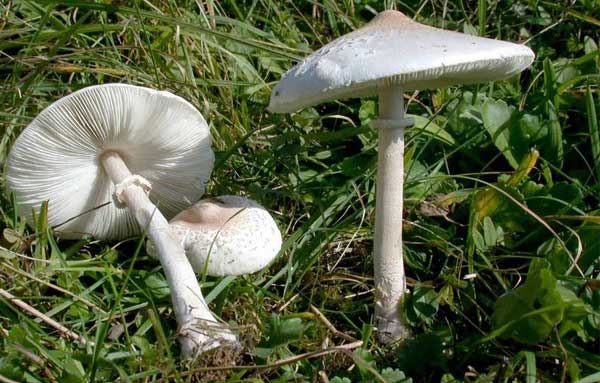
As follows:
- at the beginning of development, the cap has a rounded shape, as it grows, it opens and reaches 10 cm in diameter.The surface is formed by small scales, dry, with a matte texture, white at the edges and brown in the center. Cracking cuticle;
- loose flesh does not change its milky color in the cut, with a tart smell and taste;
- free plates with cartilaginous colarium are easily detached from the cap. At the beginning of growth, white, then pinkish;
- spores are smooth, elliptical;
- the leg is hollow inside, low, up to 10 cm, about 1 cm thick, it can be even along its entire length, or with a slight thickening at the base. The surface is smooth, milky, yellow below the ring. When pressed, it becomes slightly brown. In the upper part there is a movable membranous white ring.
Blushing
Red umbrella mushroom (Macrolepiota phacodes), in another way it is also called shaggy umbrella or chicken coop.
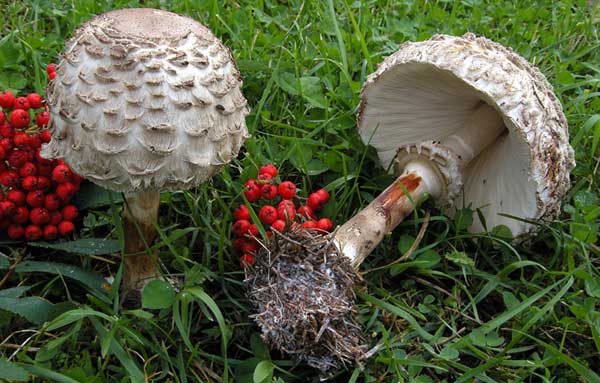
- the cap is spherical at an early age, straightens out in the process of growth and reaches about 20 cm in diameter. The texture is rough due to the many rectangular creamy pink or brown scales. In the center of the cap there is a wide brownish tubercle without scales;
- the pulp is loose-fleshy, initially white, turns red on the cut, its smell and taste are neutral. Delicate in the cap, stiff-fibrous in the stem;
- the plates are light, attached to the cartilaginous ring at the junction of the cap and the leg (collarium). When touched, they are painted in a carrot color;
- spores are oval, smooth;
- beige or light brown leg about 2 cm thick, rather high, reaches 25 cm, hollow inside, has a tuberous swelling near the soil. In the upper part there is a filmy grayish-white ring.
Motley
Mushroom umbrella variegated (Macrolepiota procera), also popularly found under the names umbrella large or tall.

- the name, "variegated", it received because of the many brownish angular scales covering a very large, 25-30 cm in diameter, cap. As it grows, its shape acquires noticeable changes: the ovate at the beginning of development turns into bell-shaped in the middle phase and fully unfolds in mature specimens. The main color is gray with shades of brown, darkening towards the center, where there is a pronounced tubercle. The surface is dry to the touch;
- the pulp is fleshy, loose, white, with a characteristic smell and taste reminiscent of nutty;
- loose, very light plates, turn red with age, are separated from the leg by a cartilaginous colarium;
- spores are smooth, elliptical;
- the leg, with a thickness of about 3 cm, can reach up to 35 cm in height. The surface is covered with brown scales, hollow inside, noticeably thickened near the base. Along the entire length, it is painted in a light brown tone. There is a wide filmy ring on the leg, which easily moves along it.
Similar species and how to distinguish from them
- The variegated umbrella is often confused with the graceful (thin) (Macrolepiota gracilenta), which is much smaller. This species is edible, quite suitable for harvesting and also belongs to the fourth flavoring category. A fatal error can be if poisonous twins fall into the basket: lead-slag chlorophyllum (Chlorophyllum molybdites) and dark-brown chlorophyllum (Chlorophyllum molybdites). Their main differences: a light cuticle, the pulp, when pressed, acquires an orange or reddish tint.
- The blushing umbrella has an edible twin, the maiden's umbrella (Chlorophyllum molybdites). It can be safely collected and harvested, although it is quite rare. Among the poisonous counterparts, in addition to the already mentioned chlorophyllums, the poisonous lepiota (Lepiota helviola), the scaly lepiota (Lepiota brunneoincarnata) and the panther fly agaric (Amanita pantherina) are similar. The main difference between these deadly twins is their much smaller size.
A novice mushroom picker may find such a comparative memo plate useful.
| Mushroom name | Hat | Pulp | Leg |
|---|---|---|---|
| Umbrella blushing | brown, scaly | changes color at the fracture to reddish | light brown |
| Lepiota poisonous | gray-pink, sometimes brick-red, with a large number of scales pressed to the cap | turns pink at the cut | pinkish, short, without thickening |
| Scaly lepiota | cream or gray-brown, with cherry-colored scaly flakes forming concentric circles | the smell of fruit in young specimens, bitter almonds in overgrown ones; the color at the break does not change. | low, with a fibrous ring |
| Amanita muscaria | yellowish, orange-, olive-brown shades, with numerous warts | does not change color at the fracture, with a repulsive odor. | white, with wide Volvo |
The mastoid (Macrolepiota mastoidea) is similar to the field umbrella. Its flesh is thinner, otherwise it is practically indistinguishable from its counterpart. The list of poisonous twins, in addition to those already listed, is supplemented by the swollen lepiota (Lepiota ventriosospora) and the stinking fly agaric (Amanita virosa):
- Lepiota is much smaller in size, has a cap with a reddish skin and a large tubercle, yellow or orange pulp, scales on all parts of the fruiting body.
- Amanita muscaria (or white toadstool) is an inhabitant of forests. Its cap is smooth, covered with light scales, with a specific smell of rotten potatoes. There is always a swollen thickening at the base of the leg.
Definitioner
- Basidia (Basidia)
-
Lat. Basidia. A specialized structure of sexual reproduction in fungi, inherent only in Basidiomycetes. Basidia are terminal (end) elements of hyphae of various shapes and sizes, on which spores develop exogenously (outside).
Basidia are diverse in structure and method of attachment to hyphae.
According to the position relative to the axis of the hypha, to which they are attached, three types of basidia are distinguished:
Apical basidia are formed from the terminal cell of the hypha and are located parallel to its axis.
Pleurobasidia are formed from lateral processes and are located perpendicular to the axis of the hypha, which continues to grow and can form new processes with basidia.
Subasidia are formed from a lateral process, turned perpendicular to the axis of the hypha, which, after the formation of one basidium, stops its growth.
Based on morphology:
Holobasidia - unicellular basidia, not divided by septa (see Fig. A, D.).
Phragmobasidia are divided by transverse or vertical septa, usually into four cells (see Fig. B, C).
By type of development:
Heterobasidia consists of two parts - hypobasidia and epibasidia developing from it, with or without partitions (see Fig. C, B) (see Fig. D).
Homobasidia is not divided into hypo- and epibasidia and in all cases is considered holobasidia (Fig. A).
Basidia is the place of karyogamy, meiosis and the formation of basidiospores. Homobasidia, as a rule, is not functionally divided, and meiosis follows karyogamy in it. However, basidia can be divided into probasidia - the site of karyogamy and metabasidia - the site of meiosis. Probasidium is often a dormant spore, for example in rust fungi. In such cases, probazidia grows with metabasidia, in which meiosis occurs and on which basidiospores are formed (see Fig. E).
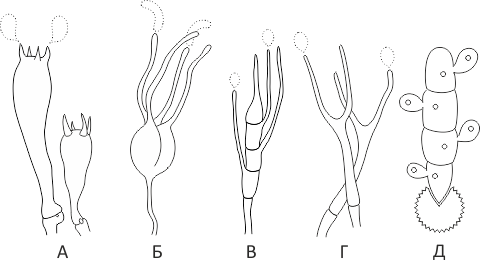
See Karyogamy, Meiosis, Gifa.
- Pileipellis
-
Lat. Pileipellis, skin - differentiated surface layer of the cap of agaricoid basidiomycetes. The structure of the skin in most cases differs from the inner flesh of the cap and may have a different structure. The structural features of pileipellis are often used as diagnostic features in descriptions of fungi species.
According to their structure, they are divided into four main types: cutis, trichoderma, hymeniderma and epithelium.
See Agaricoid fungi, Basidiomycete, Cutis, Trichoderma, Gimeniderm, Epithelium.
- Apiculus (Apiculus)
-
1) Short outgrowth at the end of the spore;
2) The elongated short process of the basidiospore, by which it is attached to the sterigma.
See Gilar process.
- Adaxial (Adaxial)
-
See Abaxial.
- Abaxial (Abaxial)
-
The abaxial (dorsal, dorsal) side / surface / structure faces away from the central or major axis, for example, the abaxial side of the basidiospore is the one that faces away from the longitudinal axis of the basidium. In contrast, the adaxial (ventral, ventral) side / surface / structure is closest to the major axis.

Taste qualities of a white umbrella
Umbrella meadow is an edible mushroom, it has a pleasant smell and taste.

Similar species
Edible relatives:
• The variegated umbrella mushroom has an external resemblance to the white umbrella, but differs in much larger sizes.
• The Konrad umbrella mushroom differs from the meadow umbrella in its brown or whitish skin, which cracks star-like and does not completely cover the cap.
• Thin umbrella mushroom is characterized by thinner flesh, in addition, it has a sharper tubercle on the cap.
It is important not to confuse a white umbrella with poisonous mushrooms, with which it also has similarities:
• Poisonous Lepiota - a very poisonous mushroom, it can be recognized due to the fact that it has a much smaller size - the diameter of the cap reaches only 6 centimeters. It also differs due to the gray-pink skin on the cap, in addition, its flesh turns pink;

• Amanita muscaria also bears some resemblance to an umbrella mushroom meadow. Inexperienced mushroom pickers can confuse these mushrooms. This similarity is very dangerous, because the stinking fly agaric is a deadly poisonous mushroom. But you can recognize the smelly fly agaric by the free valva at the base (however, it can be hidden in the soil) and a white smooth cap, which can be covered with filmy flakes. In addition, they are found exclusively in forests, and do not grow in meadows and steppes.
Benefit and harm
Speaking about the beneficial properties of the considered species, it would be enough to mention their composition rich in fiber (5.2 g / 100 g) and amino acids
But more importantly, the amount of potassium contained in mushrooms by umbrellas meets the daily requirement for this element by 16%, and there are even more B vitamins in them than in some cereals and vegetables. For those who have problems with overweight, it is useful to include umbrellas in the diet of mushrooms due to their low calorie content, low hypoglycemic index
In addition to their nutritional value, they have therapeutic properties: they are used to make extracts and infusions for the treatment of rheumatism, gout, purulent wounds and even tumor formations.
Compliance with the rules for collecting and preparing umbrella mushrooms, moderate consumption, taking into account the individual state of the body, will ensure the presence of a tasty and very useful product in the diet.
Useful properties and contraindications
Due to its excellent taste, the umbrella mushroom is a favorite subject of quiet hunting. Gathering umbrella mushrooms is better when young. In addition, they must be thoroughly heat treated. Very young umbrellas are successfully pickled, mature mushrooms are dried, salted and boiled, after which they are used to prepare broths, sauces, main courses, salads and fillings for pies and pancakes.
Umbrella mushrooms contain many substances useful for the human body:
- vitamins of group B, as well as C, E, K;
- potassium (up to 16%), sodium, magnesium, calcium, iron, phosphorus;
- tyrosine;
- arginine;
- beta glucans;
- melanin.

According to traditional healers, extracts and tinctures from umbrella mushrooms, as well as the direct consumption of these mushrooms, helps to fight a number of serious ailments, among them:
- vascular and heart diseases;
- rheumatism;
- disorders of the nervous system;
- oncological diseases.
The use of umbrella mushrooms is contraindicated for:
- diseases of the digestive tract,
- pancreatitis,
- pregnant women,
- children under 5 years old.
Despite its dubious appearance, the beneficial effect of the umbrella on the human body has been noted for a long time:
-
Fight against cancerous tumors.Beta-glucans and melanin contained in umbrella mushrooms have a positive effect on the entire body and the immune system in particular. They stabilize the metabolic process and stimulate its work. This effect is a sure barrier against cancer.
-
Improves the work of the cardiovascular system. Its use improves the functioning of the hematopoietic organs, and also strengthens the blood vessels. It also helps to relieve severity of heart problems.
-
Fight against depression. With regular use, it has a beneficial effect on the functioning of the brain and helps to avoid anxiety and mental exhaustion.
-
Normalization of the thyroid gland. The composition includes riboflavin (vitamin B2), which has a positive effect on the function of the thyroid gland, it also protects the skin, hair, nails.
-
Improving metabolism. The PP microelement helps to accelerate metabolic processes.
-
Release of "bad" cholesterol. Lecithin, which is part of the mushroom, removes excess cholesterol from the body and balances its level.
Contraindications
This representative of the kingdom of mushrooms is considered safe, but in order to avoid health problems, it is necessary to familiarize yourself with the contraindications to its use:
-
Individual intolerance.
-
Increased work of the bladder.
-
Liver disease.
-
Diseases of the intestines, stomach and pancreas.
-
Children under 6 years of age and pregnancy.
Beneficial features:
1) Oncology. Beta-glucans and melanins contained in the Variegated Umbrellas help fight cancerous tumors. And even if this is just a folk remedy, the reviews demonstrate its positive effect on the disease.
2) Heart. Cardiovascular activity is also strengthened by these mushrooms. They have a positive effect on blood circulation and blood vessels in general.
3) No depression! This miraculous mushroom helps relieve psychological distress by improving mood and ridding the body of mental fatigue.
4) Improves metabolic processes.
5) Cleans the body of excess cholesterol in the blood.
Description
The cap is 6-12 cm in diameter, thick-fleshed, initially ovoid, elongated, opens up to flat-spread, with a large brown tubercle in the center. The surface is whitish or creamy, matte, the center is brown and smooth, the rest of the surface is covered with thin scales remaining from the rupture of the skin. Edge with white flaky fibers.
The flesh of the cap is white, with a pleasant smell and slightly tart taste, does not change on the cut. In the stem - longitudinal fibrous.
The leg is 6-12 cm high, 0.6-1.2 cm thick, cylindrical, hollow, with a slight tuberous thickening at the base, sometimes curved. The surface of the leg is smooth, white, yellowish or brownish below the ring, slightly brownish from touch.
frequent, with smooth edges, free, with a thin cartilaginous colarium, easily separated from the cap, there are plates. Their color is white, in old mushrooms from cream to brownish.
The remains of the bedspread: the ring is white, wide, smooth, mobile; Volvo is missing.
Spore powder is white.
Microscopic signs
Spores 12-15 × 8-9 microns, ovoid, sometimes germinating, colorless, pseudoamyloid, metachromatic, with one or more fluorescent drops.
The tram of the plates is correct.
The hyphae of the scales are fusiform or cylindrical, 40-50 × 12-15 µm, often with a cap-shaped thickening at the ends.
Basidia are tetrasporous, clavate, 35–40 × 12–15 µm.
Cheilocystids are fusiform, colorless, thin-walled, 50 × 10 μm.
Reactions of plates with α-naphthol and pulp with aniline and guaiacol are negative; the pulp with lactophenol turns brown, with phenolaniline it gives a violet-pink color.
Varieties
- The main form of Macrolepiota excoriata var. excoriata or Macrolepiota excoriata f. excoriata - the center of the cap is glabrous, darker (to brown), the rest of the surface is finely scaly.
- Macrolepiota excoriata var. squarrosa (R. Mre) Wasser, 1978 - Cap with lagging scales.Known in North Africa, in oak plantations.
- Macrolepiota excoriata f. barlae Babos, 1974 - creamy brown hat with thin or large scales of various shapes, known in parks and gardens in Hungary.


